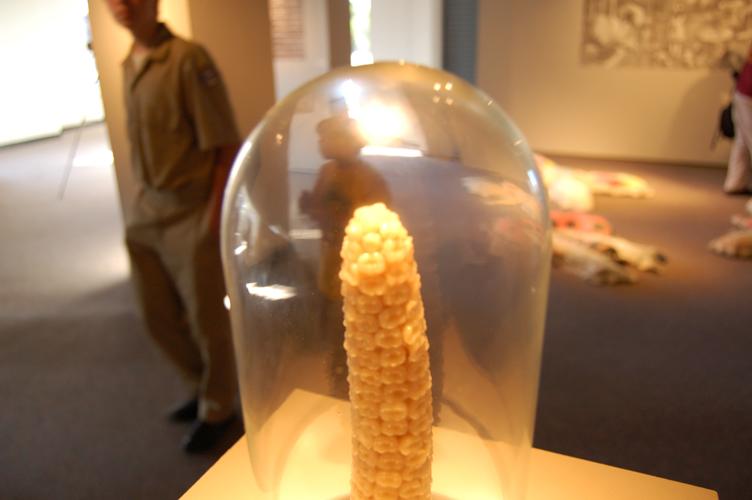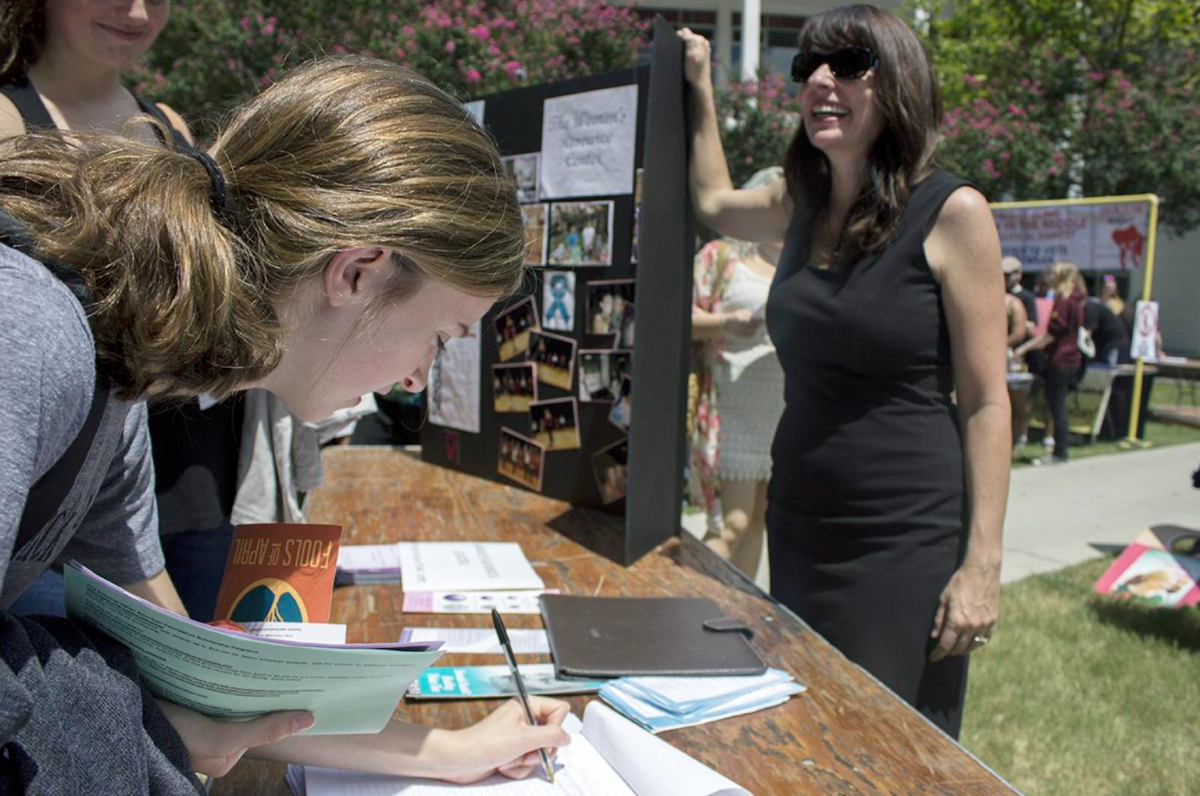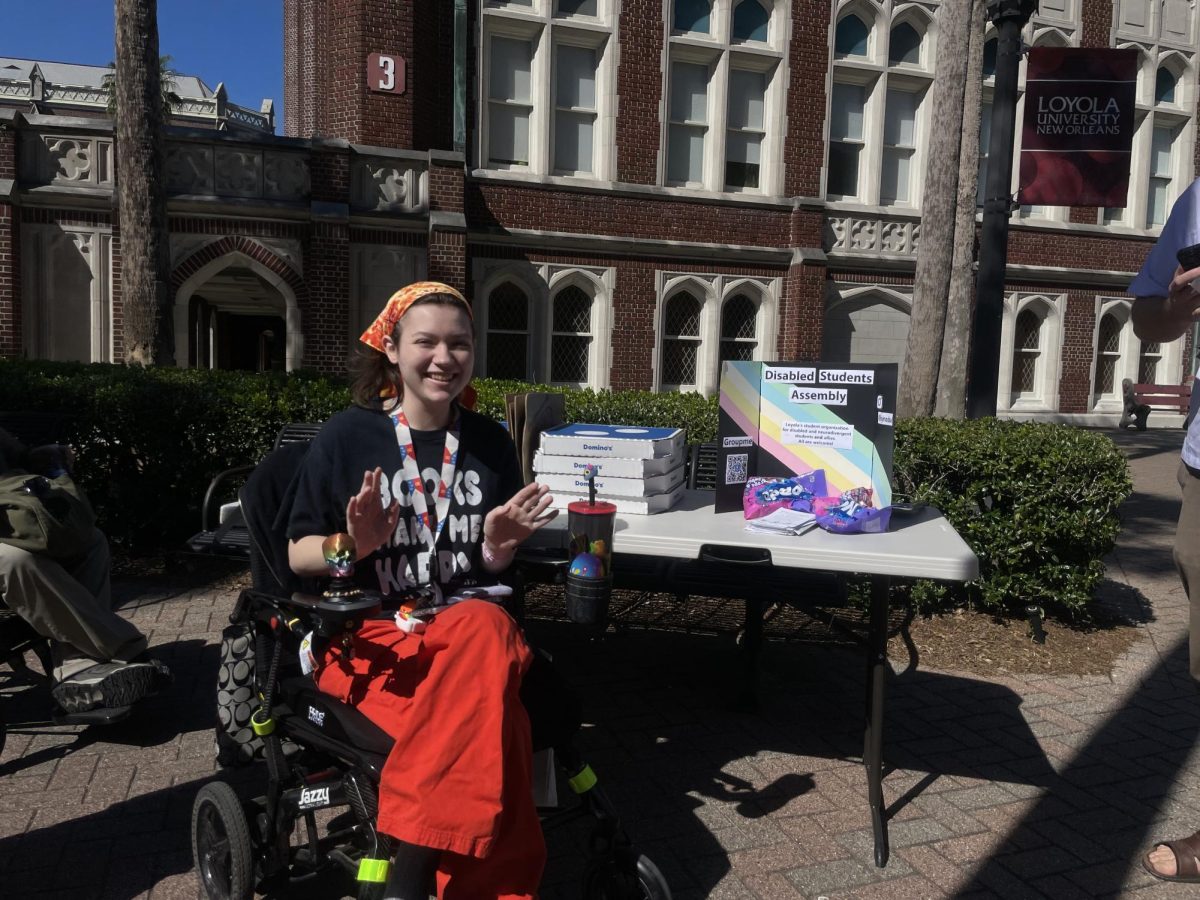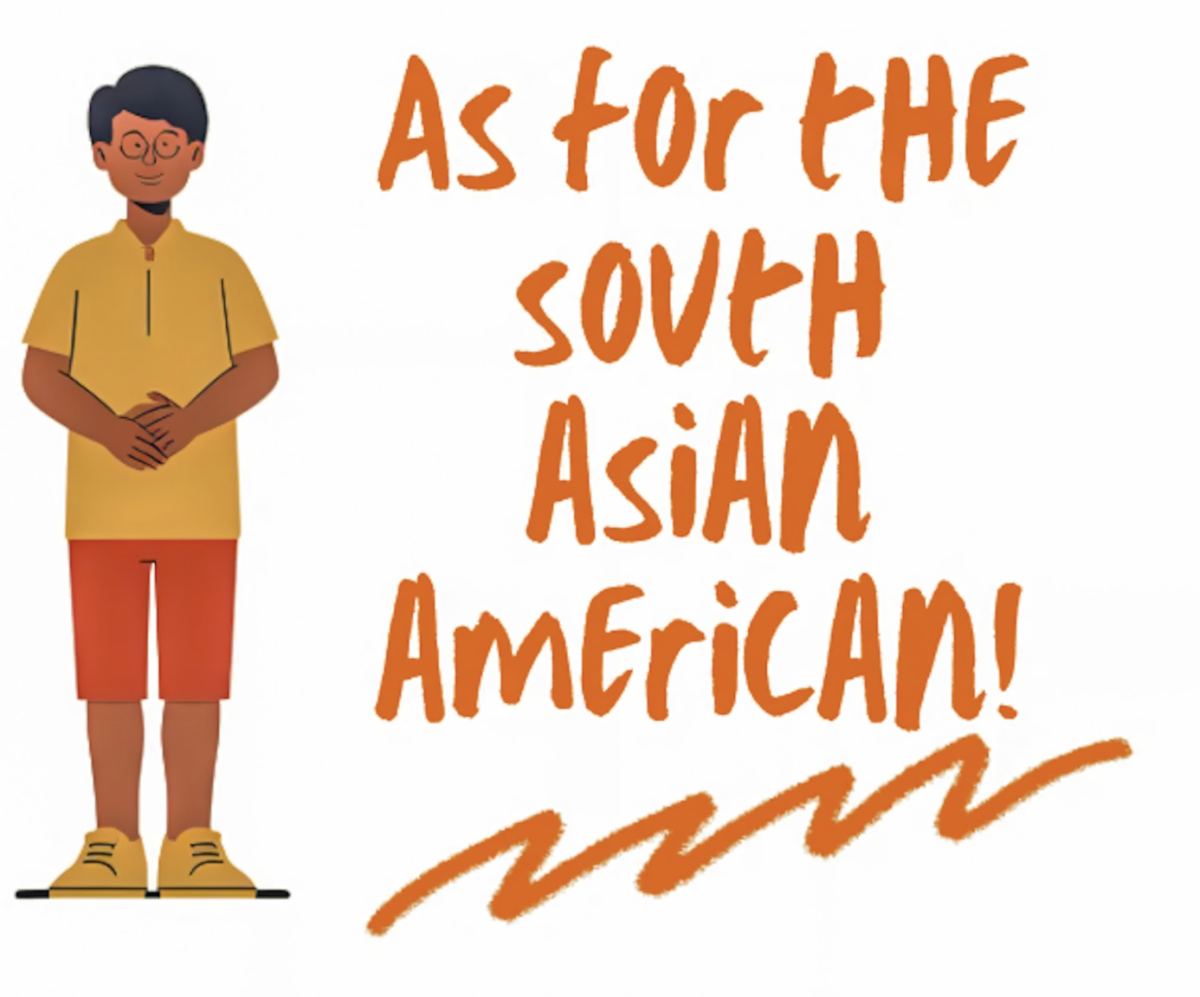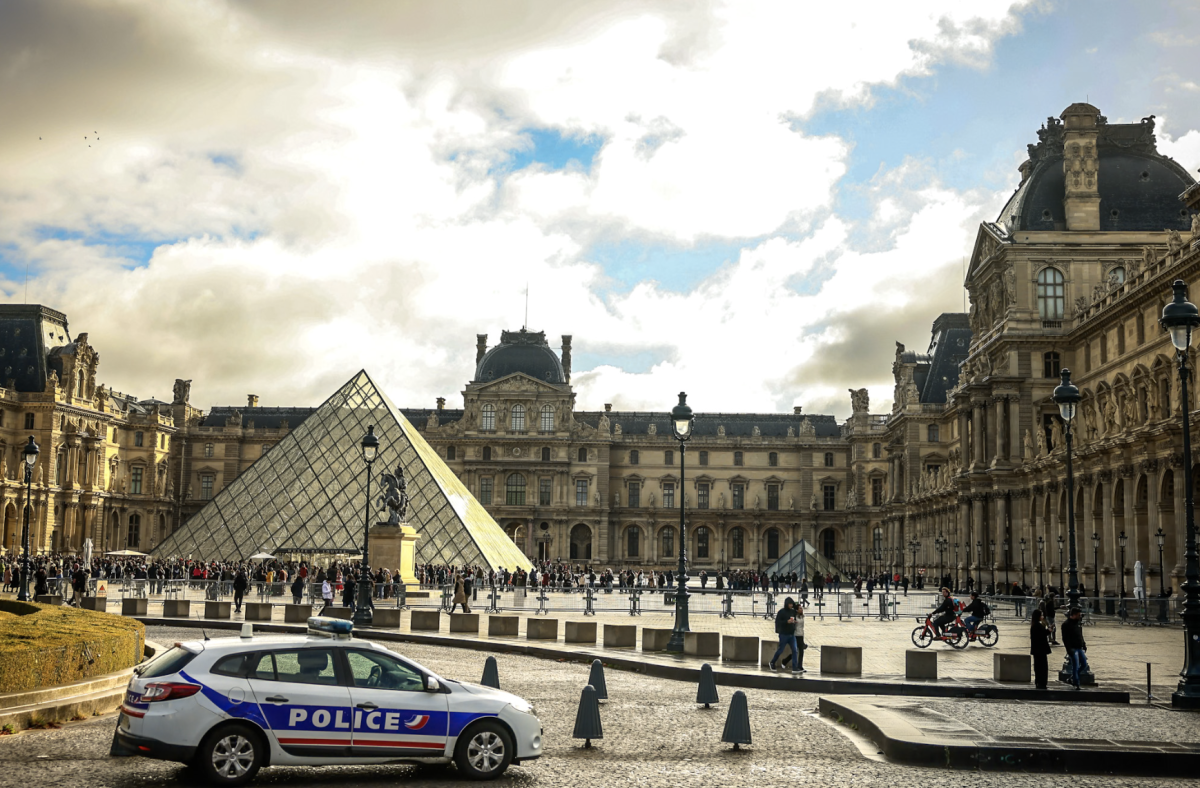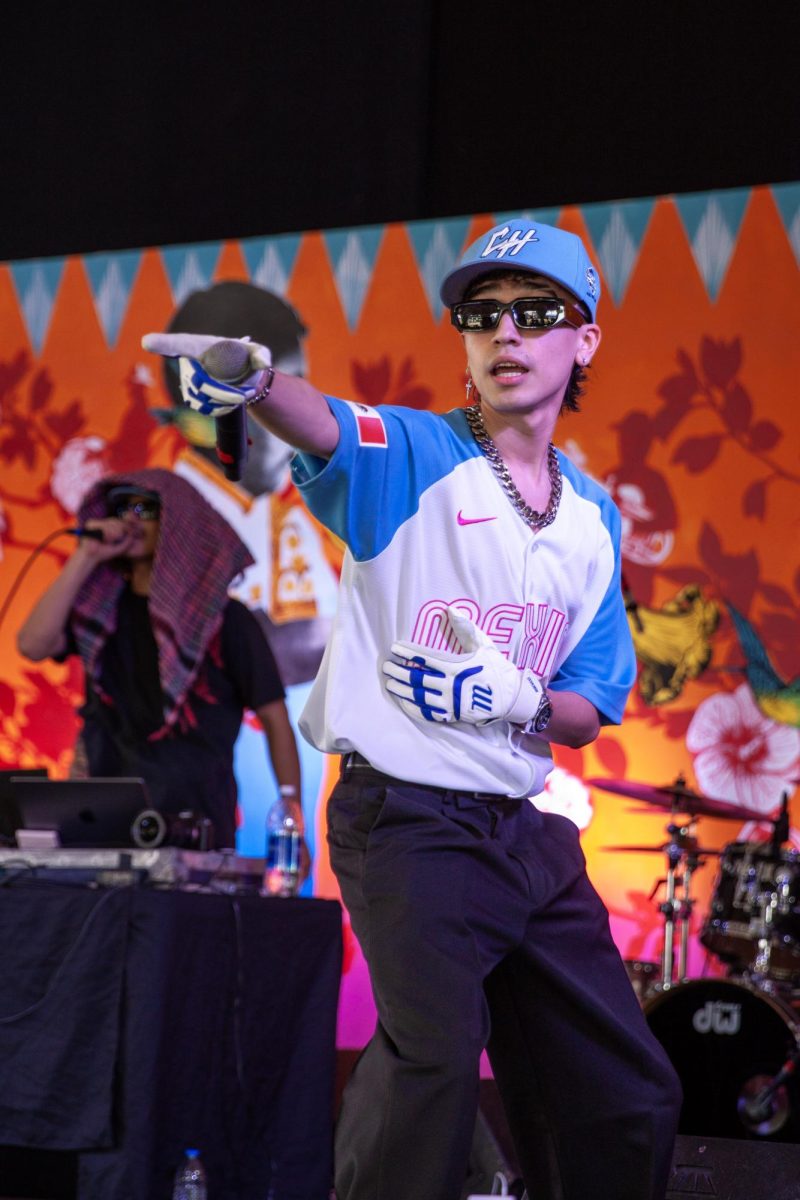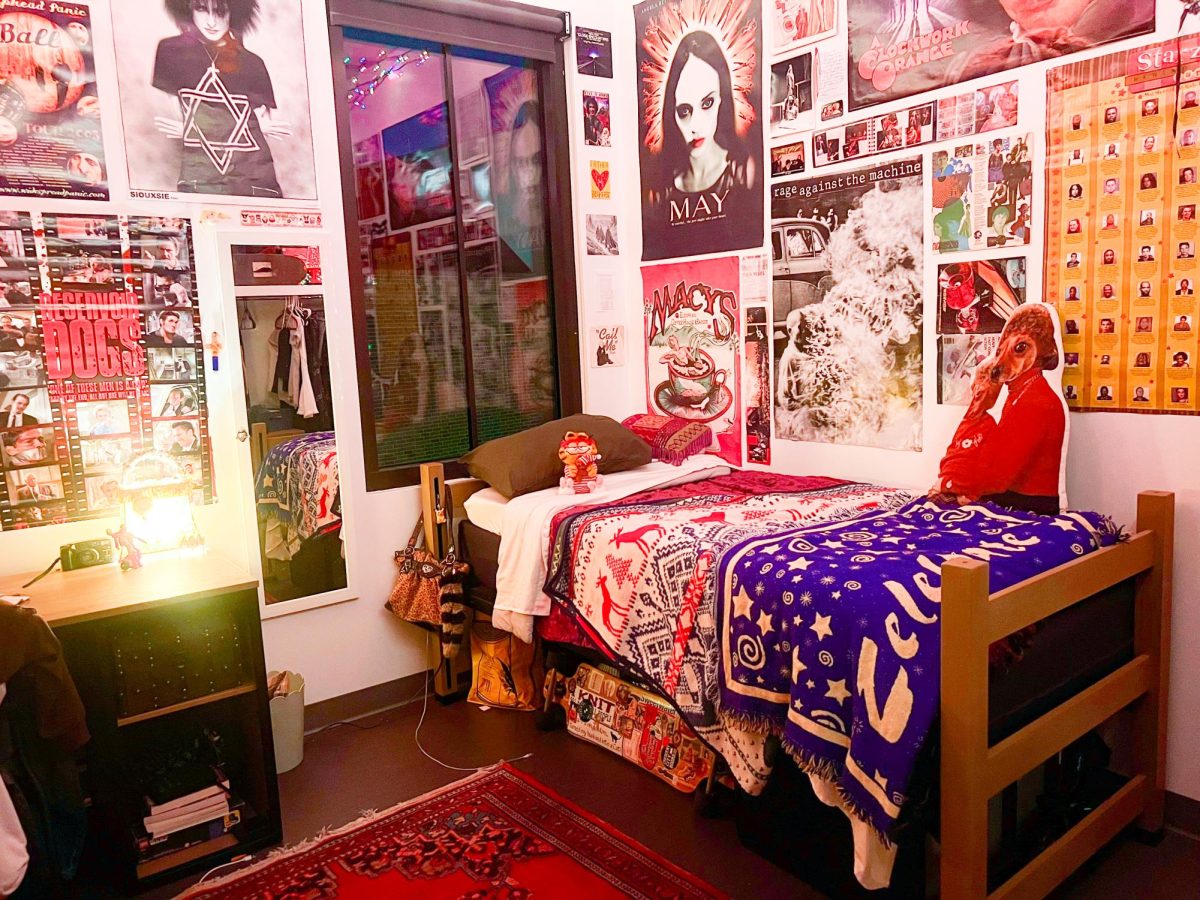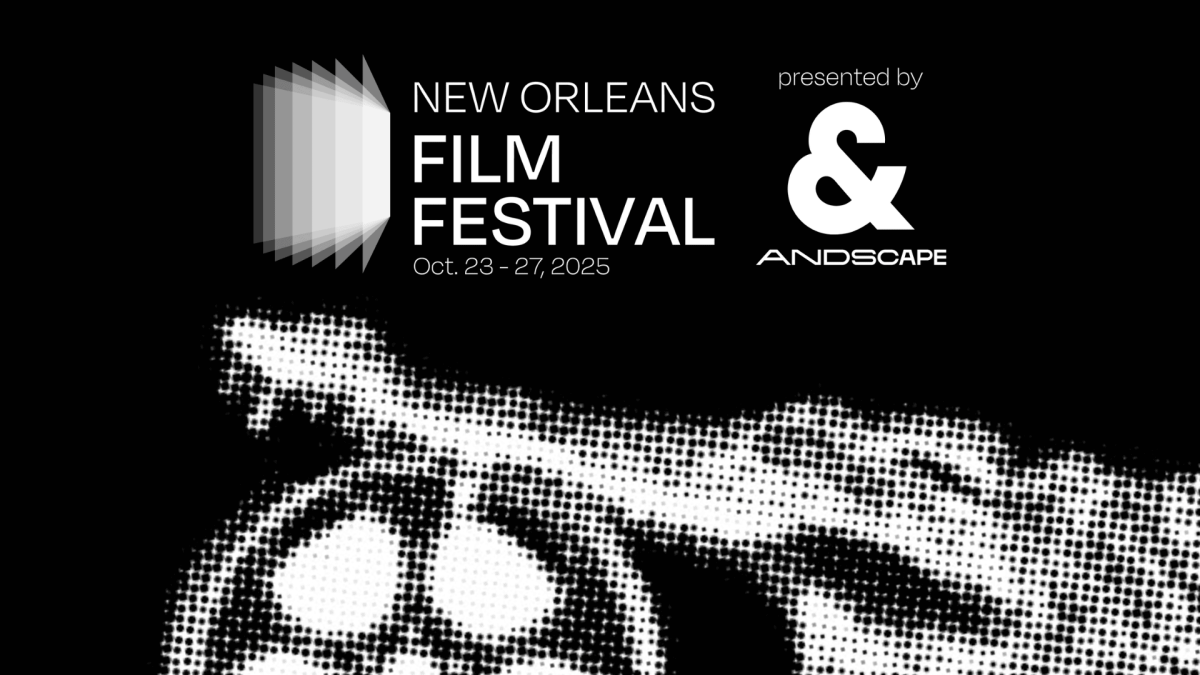The new art exhibit on campus captures the struggle of creating art during a communist regime.
The exhibit, “Ekspozite Fjala,” spotlights artwork that came before and after the era in Albania’s history under the country’s Communist party.
During the regime, people were forbidden to create art.
The work of seven Albanian artists is featured in the display.
The exhibit features a variety of art, including paintings, drawings, textiles and photos from students and professors at the Academy of the Arts in Tirana, Albania.
“We are telling our story before and after ’90,” said Ardian Isufi, an artist and professor at the Academy of Arts.
“The Communist rule broke down; now it’s like a new century,” Isufi said.
Eljon Naco, a relative of Albanian artist Edvin Celo, whose work is displayed, explained one of the exhibit’s pieces that resembled corn on the cob.
The “kernels” were actually made of teeth. The piece is called “Hybrid” and is by Isufi.
“Under the Communist era, you couldn’t express yourself, or they would pull your teeth out,” Naco said.
Isufi said that the exhibit showed what the professors were taught, and the students then took what the professors showed them and made the art their own.
This illustrated the change in the country’s history.
The art showed the core of what the teachers teach, said Lea Cristina, the leader of the group of Albanian artists. It was her idea to bring the exhibit to New Orleans and specifically to Loyola University.
“The artists were so energetic and close to their culture,” Cristina said. “I saw something similar in New Orleans. I thought it would be great for New Orleans to experience the artists’ energy.”
Cristina also said that there are plans to bring Loyola’s art to Tirana in the future.
She hopes to foster an exchange of artistic inspiration between the two countries.
“It’s nice to have something similar, to have the teachers and students come to Albania,” Cristina said.
The artistic community in Albania had reached out to a number of universities to find a place to show their art.
Loyola was the only one that gave a positive response.
“We are extremely devoted to Loyola because of their generosity,” Cristina said.
Najada Hamza is also an Albanian artist and professor whose works are displayed in “Ekspozite Fjala.”
Hamza helped Cristina in bringing the art to Loyola. She said there are presentations scheduled for different classes in the arts department to share Albanian artists’ experiences.
“The main point of visitors is to know about the history between art and everyday living,” Isufi said.
The exhibit opened on Wednesday, Sept. 7 as part of a dual exposition.
The first showing was in Tirana, featuring only the professors’ art.
The show at Loyola is the first time that the students’ work has been displayed in conjunction with their teachers’.
The exhibit will be in the Collins C. Diboll Gallery until Oct. 13.
Sable LeFrere can be reached at smlefrer@loyno.edu


